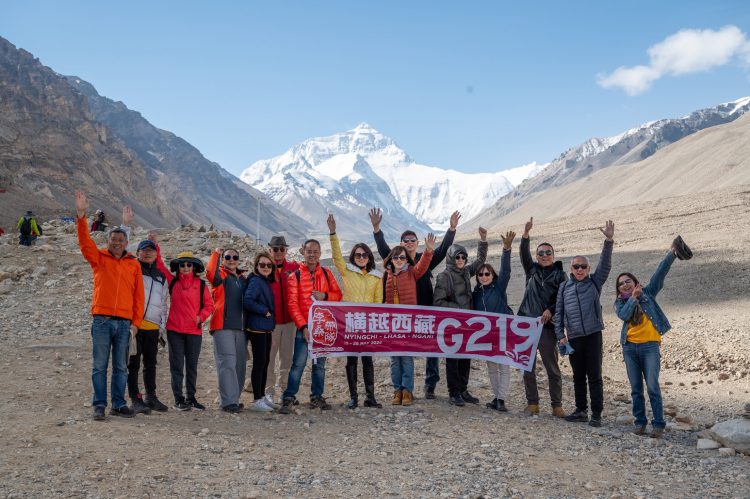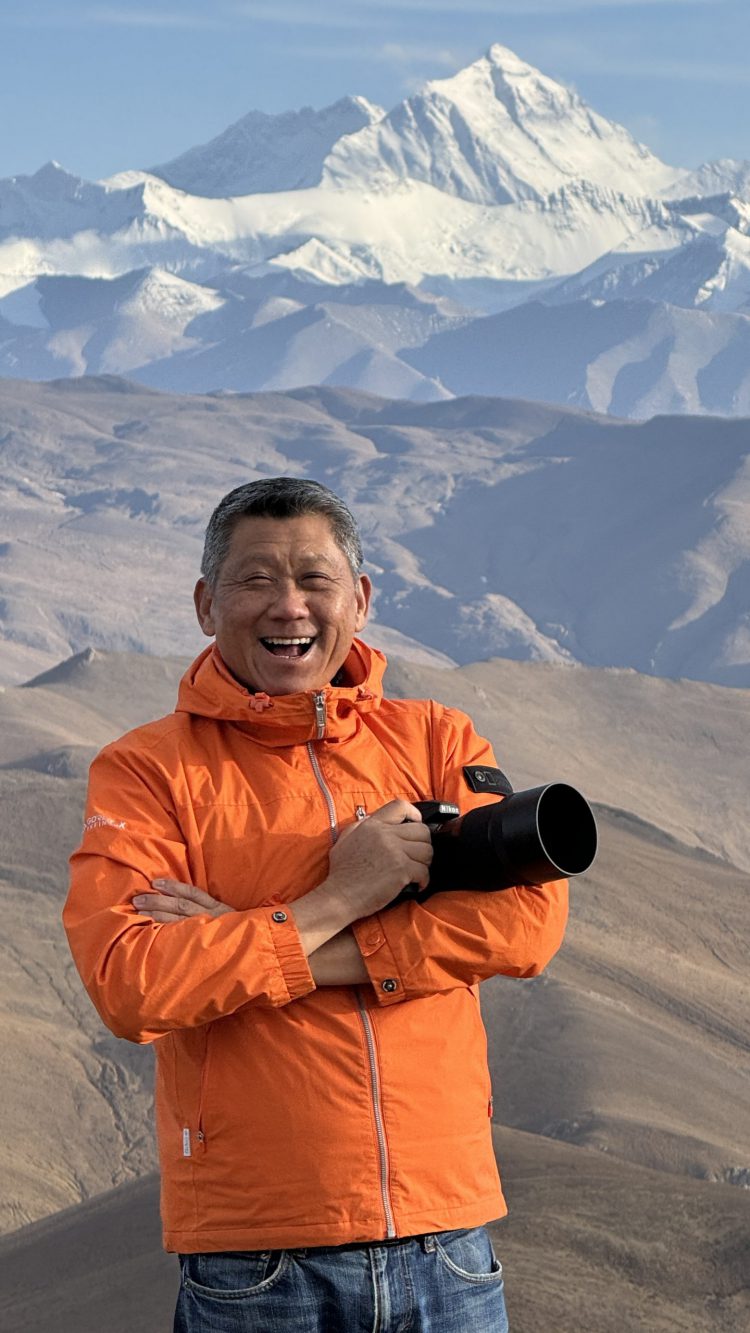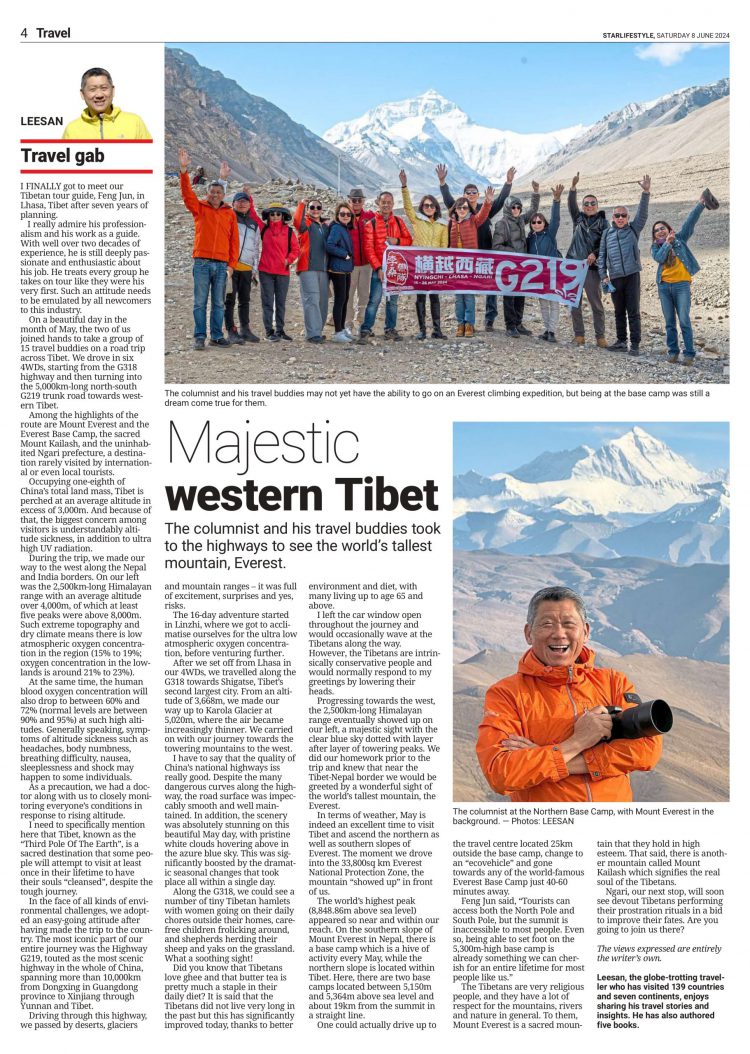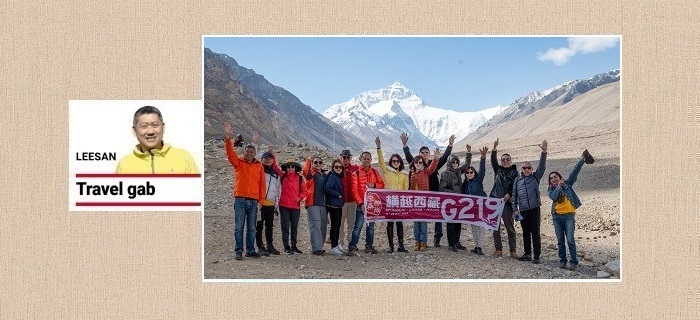Majestic western Tibet – by leesan
Leesan and his travel buddies took to the highways to see the world’s tallest mountain, Everest.
I FINALLY got to meet our Tibetan tour guide, Feng Jun, in Lhasa, Tibet after seven years of planning.
I really admire his professionalism and his work as a guide.
With well over two decades of experience, he is still deeply passionate and enthusiastic about his job. He treats every group he takes on tour like they were his very first. Such an attitude needs to be emulated by all newcomers to this industry.
On a beautiful day in the month of May, the two of us joined hands to take a group of 15 travel buddies on a road trip across Tibet. We drove in six 4WDs, starting from the G318 highway and then turning into the 5,000km-long north-south G219 trunk road towards western Tibet.
Among the highlights of the route are Mount Everest and the Everest Base Camp, the sacred Mount Kailash, and the uninhabited Ngari prefecture, a destination rarely visited by international or even local tourists.

Leesan and his travel buddies may not yet have the ability to go on an everest climbing expedition, but being at the base camp was still a dream come true for them.

Leesan at the northern Base Camp, with Mount everest in the background.
Occupying one-eighth of China’s total land mass, Tibet is perched at an average altitude in excess of 3,000m. And because of that, the biggest concern among visitors is understandably altitude sickness, in addition to ultra high UV radiation.
During the trip, we made our way to the west along the Nepal and India borders. On our left was the 2,500km-long Himalayan range with an average altitude over 4,000m, of which at least five peaks were above 8,000m.
Such extreme topography and dry climate means there is low atmospheric oxygen concentration in the region (15% to 19%; oxygen concentration in the lowlands is around 21% to 23%).
At the same time, the human blood oxygen concentration will also drop to between 60% and 72% (normal levels are between 90% and 95%) at such high altitudes.
Generally speaking, symptoms of altitude sickness such as headaches, body numbness, breathing difficulty, nausea, sleeplessness and shock may happen to some individuals.
As a precaution, we had a doctor along with us to closely monitoring everyone’s conditions in response to rising altitude.
I need to specifically mention here that Tibet, known as the “Third Pole Of The Earth”, is a sacred destination that some people will attempt to visit at least once in their lifetime to have their souls “cleansed”, despite the tough journey.
In the face of all kinds of environmental challenges, we adopted an easy-going attitude after having made the trip to the country.
The most iconic part of our entire journey was the Highway G219, touted as the most scenic highway in the whole of China, spanning more than 10,000km from Dongxing in Guangdong province to Xinjiang through Yunnan and Tibet.
Driving through this highway, we passed by deserts, glaciers and mountain ranges – it was full of excitement, surprises and yes, risks.
The 16-day adventure started in Linzhi, where we got to acclimatise ourselves for the ultra low atmospheric oxygen concentration, before venturing further.
After we set off from Lhasa in our 4WDs, we travelled along the G318 towards Shigatse, Tibet’s second largest city. From an altitude of 3,668m, we made our way up to Karola Glacier at 5,020m, where the air became increasingly thinner. We carried on with our journey towards the towering mountains to the west.
I have to say that the quality of China’s national highways is really good. Despite the many dangerous curves along the highway, the road surface was impeccably smooth and well maintained.
In addition, the scenery was absolutely stunning on this beautiful May day, with pristine white clouds hovering above in the azure blue sky. This was significantly boosted by the dramatic seasonal changes that took place all within a single day.
Along the G318, we could see a number of tiny Tibetan hamlets with women going on their daily chores outside their homes, carefree children frolicking around, and shepherds herding their sheep and yaks on the grassland. What a soothing sight!
Did you know that Tibetans love ghee and that butter tea is pretty much a staple in their daily diet? It is said that the Tibetans did not live very long in the past but this has significantly improved today, thanks to better environment and diet, with many living up to age 65 and above.
I left the car window open throughout the journey and would occasionally wave at the Tibetans along the way.
However, the Tibetans are intrinsically conservative people and would normally respond to my greetings by lowering their heads.

By taking the 4WD with pro driver, we would be able to stop wherever nice scenery en route.
Progressing towards the west, the 2,500km-long Himalayan range eventually showed up on our left, a majestic sight with the clear blue sky dotted with layer after layer of towering peaks. We did our homework prior to the trip and knew that near the Tibet-Nepal border we would be greeted by a wonderful sight of the world’s tallest mountain, the Everest.
In terms of weather, May is indeed an excellent time to visit Tibet and ascend the northern as well as southern slopes of Everest. The moment we drove into the 33,800sq km Everest National Protection Zone, the mountain “showed up” in front of us.
The world’s highest peak (8,848.86m above sea level) appeared so near and within our reach. On the southern slope of Mount Everest in Nepal, there is a base camp which is a hive of activity every May, while the northern slope is located within Tibet. Here, there are two base camps located between 5,150m and 5,364m above sea level and about 19km from the summit in a straight line.
One could actually drive up to the travel centre located 25km outside the base camp, change to an “ecovehicle” and gone towards any of the world-famous Everest Base Camp just 40-60 minutes away.
Feng Jun said, “Tourists can access both the North Pole and South Pole, but the summit is inaccessible to most people. Even so, being able to set foot on the 5,300m-high base camp is already something we can cherish for an entire lifetime for most people like us.”
The Tibetans are very religious people, and they have a lot of respect for the mountains, rivers and nature in general. To them, Mount Everest is a sacred mountain that they hold in high esteem. That said, there is another mountain called Mount Kailash which signifies the real soul of the Tibetans.
Ngari, our next stop, will soon see devout Tibetans performing their prostration rituals in a bid to improve their fates. Are you going to join us there?

Published in The Star, 9 Jun 2024
全球超过80000家酒店,Apple101助您轻松订房,出行无忧,绝对优惠价。入住期间付款,多数客房可免费取消!











